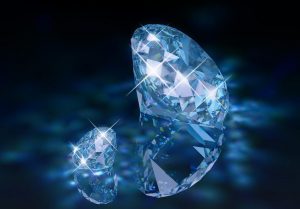Rocks: There are three major rock types: igneous, sedimentary and metamorphic.
Igneous Rocks
This rock type is formed by the solidification of molten magma either at the surface as volcanic lava, or within the Earth’s crust.
Most of the common gemstones are formed in this rock type. Igneous rocks are divided into two (2) major types:
- Intrusive igneous rocks:
Igneous rocks which solidify below the surface of the Earth are called intrusive rocks. Dykes, laccoliths, batholiths, stocks, pipes and pegmatite are various forms of intrusive rocks. Feldspar, quartz, beryl, tourmaline, topaz and zircon are some of the gemstones formed in pegmatitic rocks. Pegmatites generally represent the final phase of the crystallization of magma and are bodies associated with granitic rocks i.e. granular igneous rocks made up of quartz, feldspar and mica. - Extrusive igneous rocks:
Extrusive or volcanic rocks are formed when the magma erupted through the upper layers and crystallised by rapid cooling at the surface of the Earth. The fine grained texture of these rocks i.e. the relatively small size of the component mineral grains emphasizes the rapid rate of cooling of the magma. Slow cooling produces larger, well formed crystals. On the basis of their silica content, igneous rocks are divided into acid rocks intermediate, basic and ultra basic rocks.
Sedimentary Rocks
A rock exposed on the Earth’s surface gets weathered (decomposed and disintegrated) into small particles. These are removed and carried away by the action of rain, flowing water (streams), moving ice (glaciers) and consolidates to form sedimentary rocks.
Some material is carried in solution and is precipitated when physical or chemical conditions change. These precipitates also form layers of sedimentary rocks. Sedimentary rocks are classified into three (3) types:
- Detrital sedimentary rocks:
These are composed of fragments of rocks which were transported from the source by mechanical means, deposited and subsequently compacted, e.g. sandstone, conglomerate and shale. - Chemical sedimentary rocks:
These is formed when chemicals dissolved from the rocks are carried in solution to other areas where evaporation and precipitation of the dissolved materials takes place, e.g. limestone, opal and gypsum. - Organic sedimentary rocks:
These are formed by the accumulation of material of organic origin e.g. jet.
Metamorphic Rocks
This rock type is formed when igneous and sedimentary rocks in the various layers of the crust undergo changes as a result of a change in temperature and pressure conditions.
Typical metamorphic minerals are garnet, andalusite, kyanite, sillimanite, iolite, epidote etc. On the basis of the temperature, pressure and chemical conditions, metamorphic rocks are divided into various types.
- Contact or Thermal Metamorphism:
Rock formation occurs at higher temperatures and low pressure, for example sandstone converted into quartz. Common contact metamorphic minerals are garnet, diopside, epidote and corundum. - Regional or Dynamic Metamorphism:
Rocks are formed due to rise in temperature and pressure. It involves larger rock masses. The main rock types are gneisses and schists which have a laminated banded appearance.
Gneiss is a coarse foliated rock with alternating discontinuous layer of minerals.
Schist is a finely foliated rock consisting of layers of different minerals which split into thin irregular plates.



























Leave a Reply
You must be logged in to post a comment.